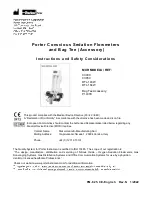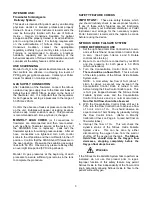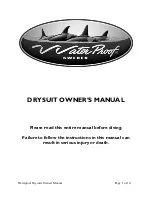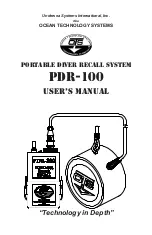
5
D I R E C T I O N S F O R U S E
NOTE:
These directions detail a basic delivery technique.
However, this is not a comprehensive description and not a
substitute for a training course that emphasizes a practical,
hands-on approach together with instruction on safe
administration techniques.
1. Maintain patient observation during
procedure.
2. Turn ON unit by pushing in the ON /
OFF switch.
3. Open N
2
O / O
2
tank valves.
4. Using Flow Control knob, set flow rate of O
2
to
desired rate, keep bag about ¾’s full. Rotate flow
control knob upwards (clockwise) to increase flow.
(See Figure 1, Item 4)
Flow Control Knob
5. Set N
2
O concentration to desired level by rotating
Concentration Control Knob (See Figure 1-Item
5) upwards (counterclockwise) to increase
concentration, as read by percentages inscribed
on the control knob. Rotate slowly until desired
level is achieved. Practice titration* with 10%
nitrous upward movements every 60 seconds
until endpoint achieved. Patients may typically
experience
relief
of
anxiety,
tingling
in
extremities, and euphoria. Patients typically
require less than 50% nitrous.
Concentration Control Knob
6. Flow Control knob may be re-adjusted to bring the
total flow of gases back to desired level, when
concentration is increased or decreased. Total
flow is equal to the sum of right and left tube
readings. Read center of ball float on flowmeter
tube.
7. When the procedure is nearing completion,
amounts of N
2
O should be decreased. Terminate
the flow of N
2
O and deliver 100% O
2
to begin a
minimum postoxygenation period of 3 to 5
minutes. Assess the patient for appropriate
recovery. Administer additional O
2
if necessary.
Titration and post-procedure 100% O
2
will
minimize nitrous exposure to the patient treatment
area, potential patient side effects of lethargy,
headache, or nausea, and any potential adverse
effects of nitrous diffusion into air filled cavities.
8. When procedure is finally completed, turn off
both
control knob valves for gas shut off.
9. Place the ON / OFF switch (primary shut-off
mechanism) in the OFF position. (Push from back
of ON / OFF switch.) NOTE: If control valves are
still open, gas flows should stop at this point.
10. Turn OFF the gas supply at the tank at the end of
the day.
BASIC DELIVERY TECHNIQUE:
Practice titration. Titration is a method of
administering a substance by adding definitive
amounts of a drug until an endpoint is reached. For
nitrous oxide / oxygen (N
2
O) / O
2
) sedation, N
2
O is
given in incremental doses until a patient has reached
a comfortable relaxed state of sedation. The ability to
titrate N
2
O is a significant advantage because it limits
the amount of drug to that which is required by the
patient. If titration is done properly, the patient does
not receive any more of the drug than is necessary.
The amount of N
2
O required by a patient on any given
day or time varies.
For information on titration, a most valuable resource
for the practitioner is the Handbook of Nitrous Oxide
and Oxygen Sedation, written by Clark and Brunswick
and published by Mosby (www.mosby.com). This text
is a concise and contemporary guide for nitrous oxide /
oxygen administration.
IMPORTANT NOTE:
When the Concentration Control knob is open, the
Flow Control knob is closed, and there is no N
2
O flow
indicated in the flow tube, the Nitrous Oxide Failsafe
System will stop the flow of N
2
O. However, this safety
feature should not be used as the primary shut off
mechanism. The control knobs are for primary shut-
off.
Setting
Shown at
60%


























